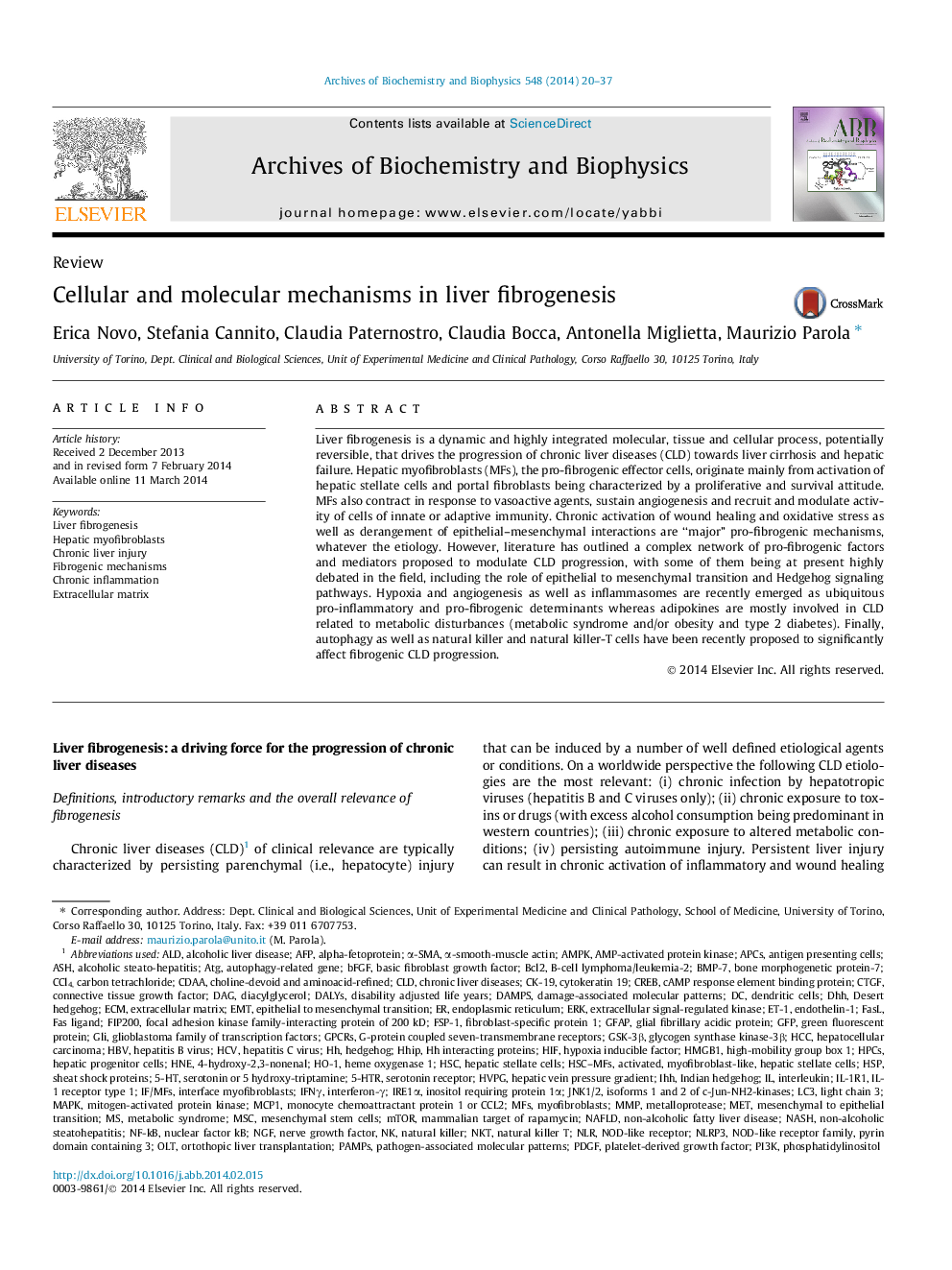| Article ID | Journal | Published Year | Pages | File Type |
|---|---|---|---|---|
| 1925202 | Archives of Biochemistry and Biophysics | 2014 | 18 Pages |
•Liver fibrogenesis relies on a heterogeneous population of myofibroblasts (MFs).•Origin of MFs correlates with tissue localization, aetiology and fibrosis pattern.•Major fibrogenic role for chronic activation of wound healing and oxidative stress.•Hypoxia and angiogenesis deeply affect fibrogenic progression of liver diseases.•The role of NK and NK-T cells, inflammasomes and autophagy in liver fibrogenesis.
Liver fibrogenesis is a dynamic and highly integrated molecular, tissue and cellular process, potentially reversible, that drives the progression of chronic liver diseases (CLD) towards liver cirrhosis and hepatic failure. Hepatic myofibroblasts (MFs), the pro-fibrogenic effector cells, originate mainly from activation of hepatic stellate cells and portal fibroblasts being characterized by a proliferative and survival attitude. MFs also contract in response to vasoactive agents, sustain angiogenesis and recruit and modulate activity of cells of innate or adaptive immunity. Chronic activation of wound healing and oxidative stress as well as derangement of epithelial–mesenchymal interactions are “major” pro-fibrogenic mechanisms, whatever the etiology. However, literature has outlined a complex network of pro-fibrogenic factors and mediators proposed to modulate CLD progression, with some of them being at present highly debated in the field, including the role of epithelial to mesenchymal transition and Hedgehog signaling pathways. Hypoxia and angiogenesis as well as inflammasomes are recently emerged as ubiquitous pro-inflammatory and pro-fibrogenic determinants whereas adipokines are mostly involved in CLD related to metabolic disturbances (metabolic syndrome and/or obesity and type 2 diabetes). Finally, autophagy as well as natural killer and natural killer-T cells have been recently proposed to significantly affect fibrogenic CLD progression.
